Why Countries are Investing in it right now?
– By Stuti Kakkar

“Cryptocurrency is increasingly being used to crowdfund war, with the tacit approval of governments” said Tom Robinson, the chief scientist at Elliptic, a London based blockchain analytics firm. The ongoing Ukrainian war is a testament to how cryptocurrency is a new tool in modern defense. Despite the Ukrainian ministry of defense denying forthright acceptance of crypto donations, the country had been able to garner $63.8 million since the Russian invasion till 14th march’22. The money, funneled through NGOs, is being used to endow the army with military equipment, medical supplies and drones. CNBC reports that the funding is also being used to develop a facial recognition app to identify Russian spies. The easy and quick transfer, transcending borders and bypassing authorities, is not the only merit that the blockchain powered crypto currencies & assets hold. However, this advantage clearly makes it stand out not only to Ukraine, but also to Russia, which is looking at cryptocurrency to cushion the economic pains from sanctions, in a similar way in which North Korea used bitcoin to abate US sanctions.
Source: Elliptic Global Policy and Research Group (2022)
However, this article is neither rooted to the Ukraine-Russia war, nor limited to cryptocurrencies. Instead, here we dig deeper to understand the (potential) applications of the blockchain technology in the domain of defense. The very first step to take here is to separate blockchain from cryptocurrency. While cryptocurrencies are the most popular use-case of blockchain, the latter is a general purpose technology- with various use-cases in numerous domains (in logistics, health, banking, manufacturing, to name a few). It would be superfluous to review its nature when there are robust resources which provide in-depth analysis of blockchain and its uses- (The Truth About Blockchain, 2019); (Davidson et al., 2016); (Javaid et al., 2021). Thus, we will confine ourselves to summarizing the key points.
Source: Blockchain.wtf
A blockchain can be described as a decentralized, distributed, transparent and trust-less system of maintaining immutable record of transactions in real time. A simple analogy to explain this is that of google documents. When a google doc. is shared with a group of people (distributive), everyone has access to it at the same time; changes can be made by anyone (decentralized) and are visible to the rest in real time (transparency). Owing to these characteristics, there is no need for a central trusted authority to oversee the transactions. This provides privacy and anonymity. Moreover, once a transaction is recorded in a chain, it can not be altered, thus safeguarding integrity of data and reducing the probability of a central-point of failure/ compromise. These benefits win blockchain technology desirability in the defense sector.
There are three types of blockchain: public, private and consortium blockchains. While the former is completely decentralized (i.e. can be accessed from anywhere by anyone), private (or permissioned) blockchains are more centralized, have permissioned entry of participants in a network and secure transactions to be available only to participants. Given the sensitivity of the information generated and transferred in the defense sector, private networks appear to be the most suitable.
The resilience, security and immutability of blockchain makes it an important tool to mitigate cyber attacks and protect data, be it in battlefield, intelligence or defense department of the government. As we move towards cyber warfare, the frequency of cyber attacks on critical government institutions and firms has significantly increased. These organizations are central storages of sensitive information, which makes them vulnerable to “terabyte of death”. However, being distributed and decentralized, blockchain is highly useful in lowering the risks. All participants of the network have the same data, making it more difficult for a single bad actor to cast any malignant influence; full encryption blocks unauthorized parties from penetrating the system.
Blockchain also strengthens the resilience of communication, making sure that the orders directed down the hierarchy are valid, accurate and without a risk of being intercepted. Unlike a central entity responsible for flow of communication, blockchain doesn’t lead to collapse of the whole network due to the compromise of a part.
Blockchain is also being tested in critical weapons. The technology can increase the efficiency and reduce the time of systems integration. For example, the US Navy uses the Aegis Combat System– a centralized system, but blockchain can speed up fire control and decentralized decision-making nodes can continue to function even when the central computers shut down.
Perhaps the most direct application of blockchain we expect to see is in defense supply chain management. Blockchain is already being adopted in supply chain management by various businesses like Walmart, Starbucks, etc. for traceability of materials, ease of payments and verifying the identity of sellers. Identity verification is important in defense logistics as critical weapons are involved. Moreover, blockchain is proven to be useful in tracking parts from ‘cradle to cockpit’, preventing counterfeits and improving planning of resources (by knowing the exact availability of resources). As per a report by Deloitte, more than 60 percent of the issues with part receiving was due to poor or missing paperwork, and on average it took 34 days to correct the problem in the aerospace and defense sector. Blockchain can thus help in reducing cost, time and increasing safety, delivery speed. Moreover, it can also be used to trace where funds allocated for war are used, thereby preventing corruption, leakages and financial loss during operations. Think about the huge financial cost and losses associated with US presence in Afghanistan.
Other uses of blockchain in defense are in strengthening of communication resilience, securing personal data, soldiers registers, refugee identification, 3D printing of drones and other equipment, increasing visibility.
Source: (Wasim Ahmad et al., 2021)
Having identified the potential of blockchain early on, many countries, especially China, Russia and US, have started investing in Decentralized Ledger Technology (DLT) i.e. blockchain. The table below describes the proposed use cases of blockchain in the military in US, Chinese and Russian Publications – a research by (Lilly & Lilly, 2021) – which undertakes linguistic analysis of official publications on military blockchain by the three countries. The research finds that “…US literature contains frequent statistically significant mentions of China and Russia, while China and Russia occasionally mention the Defense Advanced Research Projects Agency, NATO and the US in the context of blockchain policies.These mentions suggest that each country is framing the debates around blockchain not only in terms of improving domestic processes but also in terms of strategic competition…”
Source: (Lilly & Lilly, 2021)
The US owes a lot of its military prowess to digital technologies. Be it drones operating miles away from the battlefield or real-time video streaming of battle spaces; the weapons, tactics and strategy of various militaries is based on complex digital technologies. This is the reason why US arch-rivals Russia and China want to gain an edge on the next emerging technology- blockchain- before the US. Actions of these governments as well as their public proclamations indirectly and directly reveal the strategic importance behind this stance.
China’s president Xi Jingping was one of the first major world leaders to proclaim support for blockchain technology, by calling it an “important breakthrough in independent innovation of core technologies.” China has already surpassed the US in blockchain patents (Jennings, 2018). and the Chinese government has over 500 registered blockchain projects. The State Information Centre of China along with a consortium of private firms has also launched a blockchain-based service network (BSN)- a global infrastructure network controlled by China that is capable of monitoring the activity of American citizens, as the network is supported by none other than american tech giants Amazon Web Services (AWS), Microsoft and Google which are among the major cloud service providers for BSN’s overseas data centers (Pan, 2020).
China’s first mover advantage and attempts to dominate in blockchain technology, is a threat enough for the US to amp up its focus on blockchain. As per a report (Value Technology Foundation, 2020) “By not strategically positioning the U.S. as a leader in DLT, the U.S. will lose its position as the top currency provider, source of safe, transparent capital investment, and leader in internet and technology”
Russia is also not behind in research and development of blockchain applications. In 2018, a representative of FSB boasted “the Internet belongs to the Americans — but blockchain will belong to us.” Russia’s Ministry of Defense has launched a research laboratory to propel research on military applications of blockchain, especially, to mitigate cyber-security attacks and protect critical infrastructure.
On the other hand, India has only made a fleeting reference to blockchain in defense when chief of Army MM Narvane said “We are looking at using blockchain technologies and direct energy weapons like a laser in future.” (2020). However, little information is available on any project taken up by India in this domain. While blockchain is still a nascent technology, maybe decades away from being mainstream, India should also invest in research and development of DLT for defense applications to reap benefits in future as well as strengthen its position in defense, amidst changing war landscape with a neighbor which is taking blockchain very seriously.




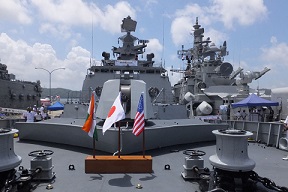
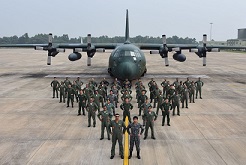





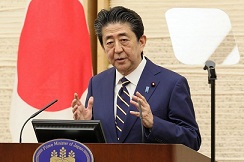





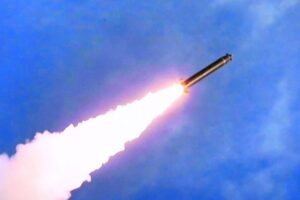




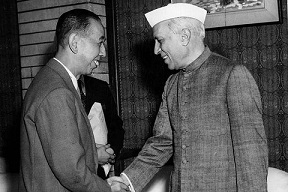
















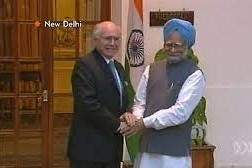













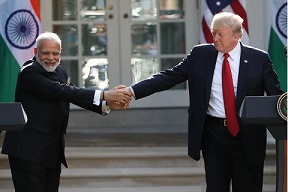



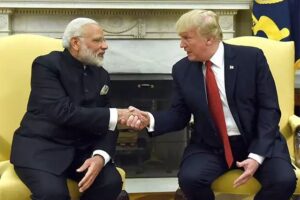


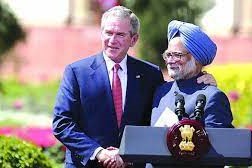

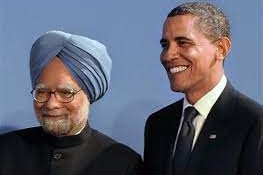



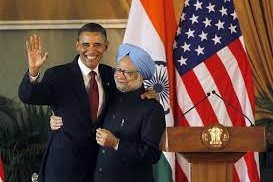













 onducted a total of five underground nuclear tests, breaking a 24-year self-imposed moratorium on nuclear testing. Pakistan followed, claiming 5 tests on May 28, 1998, and an additional test on May 30. The unannounced tests created a global storm of criticism, as well as a serious setback for decades of U.S. nuclear nonproliferation efforts in South Asia. On May 13, 1998, President Clinton imposed economic and military sanctions on India, mandated by Section 102 of the Arms Export Control Act (AECA), and applied the same sanctions to Pakistan on May 30. Some effects of the sanctions on India included: termination of $21 million in FY1998 economic development assistance; postponement of $1.7 billion in lending by the International Financial Institutions (IFI), as supported by the Group of Eight (G-8) leading industrial nations; prohibition on loans or credit from U.S. banks to the government of India; and termination of Foreign Military Sales under the Arms Export Control Act. Humanitarian assistance, food, or other agricultural commodities are excepted from sanctions under the law.
onducted a total of five underground nuclear tests, breaking a 24-year self-imposed moratorium on nuclear testing. Pakistan followed, claiming 5 tests on May 28, 1998, and an additional test on May 30. The unannounced tests created a global storm of criticism, as well as a serious setback for decades of U.S. nuclear nonproliferation efforts in South Asia. On May 13, 1998, President Clinton imposed economic and military sanctions on India, mandated by Section 102 of the Arms Export Control Act (AECA), and applied the same sanctions to Pakistan on May 30. Some effects of the sanctions on India included: termination of $21 million in FY1998 economic development assistance; postponement of $1.7 billion in lending by the International Financial Institutions (IFI), as supported by the Group of Eight (G-8) leading industrial nations; prohibition on loans or credit from U.S. banks to the government of India; and termination of Foreign Military Sales under the Arms Export Control Act. Humanitarian assistance, food, or other agricultural commodities are excepted from sanctions under the law. 
















 The first ministerial level meeting of QUAD was held on the sidelines of the United Nations General Assembly in New York. Before this, the QUAD had
The first ministerial level meeting of QUAD was held on the sidelines of the United Nations General Assembly in New York. Before this, the QUAD had AusIndEx is an exercise between India and Australia which was first held in 2015.The Australian
AusIndEx is an exercise between India and Australia which was first held in 2015.The Australian 







 On recommendations of the Japanese government, the four countries met at Manila, Philippines for ASEAN Regional Forum (ARF) originally, but also ended up having a meeting of what we call the first meeting of four nation states on issues of
On recommendations of the Japanese government, the four countries met at Manila, Philippines for ASEAN Regional Forum (ARF) originally, but also ended up having a meeting of what we call the first meeting of four nation states on issues of  On his official visit to India, Japanese PM Mr. Shinzo Abe reinforced the ties of two nations, i.e., Japan and India with his famous speech about
On his official visit to India, Japanese PM Mr. Shinzo Abe reinforced the ties of two nations, i.e., Japan and India with his famous speech about  In 2007, Japanese President Shinzo Abe resigned from his post citing health reasons. This had a significant impact on QUAD as he was the architect & advocate of QUAD. His successor, Yasuo Fukuda, did not take up QUAD with such zeal leading to dormancy of the forum. (
In 2007, Japanese President Shinzo Abe resigned from his post citing health reasons. This had a significant impact on QUAD as he was the architect & advocate of QUAD. His successor, Yasuo Fukuda, did not take up QUAD with such zeal leading to dormancy of the forum. ( Japan earthquake and tsunami of 2011, also called Great Sendai Earthquake or Great Tōhoku Earthquake, was a 9.0 magnitude earthquake which struck below the floor of the Western Pacific at 2:49 PM. The powerful earthquake affected the northeastern coast of Honshu, Japan’s main island, and also initiated a series of large tsunami waves that devastated coastal areas of Japan, which also led to a major nuclear accident. Japan received aid from India, US, Australia as well as other countries. US Navy aircraft carrier was dispatched to the area and Australia sent search-and-rescue teams.
Japan earthquake and tsunami of 2011, also called Great Sendai Earthquake or Great Tōhoku Earthquake, was a 9.0 magnitude earthquake which struck below the floor of the Western Pacific at 2:49 PM. The powerful earthquake affected the northeastern coast of Honshu, Japan’s main island, and also initiated a series of large tsunami waves that devastated coastal areas of Japan, which also led to a major nuclear accident. Japan received aid from India, US, Australia as well as other countries. US Navy aircraft carrier was dispatched to the area and Australia sent search-and-rescue teams.  India and Australia signed the
India and Australia signed the  The India-Japan Agreement for Cooperation in the Peaceful Uses of Nuclear Energy was signed on 11 November, 2016 and came into force on 20 July, 2017 which was representative of strengthening ties between India and Japan. Diplomatic notes were exchanged between Dr. S. Jaishankar and H.E. Mr. Kenji Hiramatsu, Ambassador of Japan to India. (
The India-Japan Agreement for Cooperation in the Peaceful Uses of Nuclear Energy was signed on 11 November, 2016 and came into force on 20 July, 2017 which was representative of strengthening ties between India and Japan. Diplomatic notes were exchanged between Dr. S. Jaishankar and H.E. Mr. Kenji Hiramatsu, Ambassador of Japan to India. ( The foreign ministry
The foreign ministry The Officials of QUAD member countries met in Singapore on November 15, 2018 for consultation on regional & global issues of common interest. The main discussion revolved around connectivity, sustainable development, counter-terrorism, maritime and cyber security, with the view to promote peace, stability and prosperity in the
The Officials of QUAD member countries met in Singapore on November 15, 2018 for consultation on regional & global issues of common interest. The main discussion revolved around connectivity, sustainable development, counter-terrorism, maritime and cyber security, with the view to promote peace, stability and prosperity in the  The 23rd edition of trilateral Malabar maritime exercise between India, US and Japan took place on 26 September- 04 October, 2019 off the coast of Japan.
The 23rd edition of trilateral Malabar maritime exercise between India, US and Japan took place on 26 September- 04 October, 2019 off the coast of Japan.  After the first ministerial level meeting of QUAD in September, 2019, the senior officials of US, Japan, India and Australia again met for consultations in Bangkok on the margins of the East Asia Summit. Statements were issued separately by the four countries. Indian Ministry of External Affairs said “In statements issued separately by the four countries, MEA said, “proceeding from the strategic guidance of their Ministers, who met in New York City on the sidelines of the UN General Assembly recently, the officials exchanged views on ongoing and additional practical cooperation in the areas of connectivity and infrastructure development, and security matters, including counterterrorism, cyber and maritime security, with a view to promoting peace, security, stability, prosperity in the Indo-Pacific region.”
After the first ministerial level meeting of QUAD in September, 2019, the senior officials of US, Japan, India and Australia again met for consultations in Bangkok on the margins of the East Asia Summit. Statements were issued separately by the four countries. Indian Ministry of External Affairs said “In statements issued separately by the four countries, MEA said, “proceeding from the strategic guidance of their Ministers, who met in New York City on the sidelines of the UN General Assembly recently, the officials exchanged views on ongoing and additional practical cooperation in the areas of connectivity and infrastructure development, and security matters, including counterterrorism, cyber and maritime security, with a view to promoting peace, security, stability, prosperity in the Indo-Pacific region.” US 2+2 Ministerial Dialogue was held on 18 December, 2019, in Washington DC. Secretary of State Michael R. Pompeo and Secretary of Defense Mark T. Esper will host Indian Minister of External Affairs Dr. S. Jaishankar and Minister of Defense Shri Rajnath Singh. The discussion focussed on deepening bilateral strategic and defense cooperation, exchanging perspectives on global developments, and our shared leadership in the Indo-Pacific region.The two democracies signed the Industrial Security Annex before the 2+2 Dialogue. Assessments of the situation in Afghanistan, Pakistan, Nepal, Sri Lanka, and the Indian Ocean region in general were shared between both countries. (
US 2+2 Ministerial Dialogue was held on 18 December, 2019, in Washington DC. Secretary of State Michael R. Pompeo and Secretary of Defense Mark T. Esper will host Indian Minister of External Affairs Dr. S. Jaishankar and Minister of Defense Shri Rajnath Singh. The discussion focussed on deepening bilateral strategic and defense cooperation, exchanging perspectives on global developments, and our shared leadership in the Indo-Pacific region.The two democracies signed the Industrial Security Annex before the 2+2 Dialogue. Assessments of the situation in Afghanistan, Pakistan, Nepal, Sri Lanka, and the Indian Ocean region in general were shared between both countries. ( The foreign ministers of QUAD continued their discussions from the last ministerial level meeting in 2019, on 6 October, 2020. While there was no joint statement released, all countries issued individual readouts. As per the issue readout by India, the discussion called for a coordinated response to the challenges including financial problems emanating from the pandemic, best practices to combat Covid-19, increasing the resilience of supply chains, and enhancing access to affordable vaccines, medicines and medical equipment. There was also a focus on maintaining stability in the Indo-Pacific region amidst growing tensions. Australian media release mentions “We emphasised that, especially during a pandemic, it was vital that states work to ease tensions and avoid exacerbating long-standing disputes, work to counter disinformation, and refrain from malicious cyberspace activity. Ministers reiterated that states cannot assert maritime claims that are inconsistent with international law, particularly the United Nations Convention on the Law of the Sea (UNCLOS).”
The foreign ministers of QUAD continued their discussions from the last ministerial level meeting in 2019, on 6 October, 2020. While there was no joint statement released, all countries issued individual readouts. As per the issue readout by India, the discussion called for a coordinated response to the challenges including financial problems emanating from the pandemic, best practices to combat Covid-19, increasing the resilience of supply chains, and enhancing access to affordable vaccines, medicines and medical equipment. There was also a focus on maintaining stability in the Indo-Pacific region amidst growing tensions. Australian media release mentions “We emphasised that, especially during a pandemic, it was vital that states work to ease tensions and avoid exacerbating long-standing disputes, work to counter disinformation, and refrain from malicious cyberspace activity. Ministers reiterated that states cannot assert maritime claims that are inconsistent with international law, particularly the United Nations Convention on the Law of the Sea (UNCLOS).” On September 24, President Biden hosted Prime Minister Scott Morrison of Australia, Prime Minister Narendra Modi of India, and Prime Minister Yoshihide Suga of Japan at the White House for the first-ever in-person Leaders’ Summit of the QUAD. The leaders released a Joint Statement which summarised their dialogue and future course of action. The regional security of the Indo-Pacific and strong confidence in the ASEAN remained on the focus along with response to the Pandemic.
On September 24, President Biden hosted Prime Minister Scott Morrison of Australia, Prime Minister Narendra Modi of India, and Prime Minister Yoshihide Suga of Japan at the White House for the first-ever in-person Leaders’ Summit of the QUAD. The leaders released a Joint Statement which summarised their dialogue and future course of action. The regional security of the Indo-Pacific and strong confidence in the ASEAN remained on the focus along with response to the Pandemic.  The QUAD Vaccine Partnership was announced at the first QUAD Summit on 12 March 2021 where QUAD countries agreed to deliver 1.2 billion vaccine doses globally. The aim was to expand and finance vaccine manufacturing and equipping the Indo-Pacific to build resilience against Covid-19. The launch of a senior-level QUAD Vaccine Experts Group, comprised of top scientists and officials from all QUAD member governments was also spearheaded.
The QUAD Vaccine Partnership was announced at the first QUAD Summit on 12 March 2021 where QUAD countries agreed to deliver 1.2 billion vaccine doses globally. The aim was to expand and finance vaccine manufacturing and equipping the Indo-Pacific to build resilience against Covid-19. The launch of a senior-level QUAD Vaccine Experts Group, comprised of top scientists and officials from all QUAD member governments was also spearheaded.  Although the Tsunami Core group had to be disbanded on fulfilment of its purpose, however the quadrilateral template that formed remained intact as a successful scaffolding of four countries, as stated by authors Patrick Gerard Buchan and Benjamin Rimland in their diplomatic brief about QUAD ( you can access the brief at
Although the Tsunami Core group had to be disbanded on fulfilment of its purpose, however the quadrilateral template that formed remained intact as a successful scaffolding of four countries, as stated by authors Patrick Gerard Buchan and Benjamin Rimland in their diplomatic brief about QUAD ( you can access the brief at  Secretary of State Colin Powell stated that the Core Tsunami Group was to be disbanded and folded and clubbed with the broader United Nations led Relief Operations. In a Tsunami Relief Conference in Jakarta, Secretary Powell stated that
Secretary of State Colin Powell stated that the Core Tsunami Group was to be disbanded and folded and clubbed with the broader United Nations led Relief Operations. In a Tsunami Relief Conference in Jakarta, Secretary Powell stated that  Soon after the Earthquake and Tsunami crisis, humanitarian reliefs by countries, viz., US, India, Japan, and Australia started to help the 13 havoc-stricken countries. The US initially promised $ 35 Millions in aid. However, on 29
Soon after the Earthquake and Tsunami crisis, humanitarian reliefs by countries, viz., US, India, Japan, and Australia started to help the 13 havoc-stricken countries. The US initially promised $ 35 Millions in aid. However, on 29 At 7:59AM local time, an earthquake of 9.1 magnitude (undersea) hit the coast of Sumatra, an Indonesian island. As a result of the same, massive waves of Tsunami triggered by the earthquake wreaked havoc for 7 hours across the Indian Ocean and to the coastal areas as far away as East Africa. The infamous Tsunami killed around 225,000 people, with people reporting the height of waves to be as high as 9 metres, i.e., 30 feet. Indonesia, Srilanka, India, Maldives, Thailand sustained horrendously massive damage, with the death toll exceeding 200,000 in Northern Sumatra’s Ache province alone. A great many people, i.e., around tens of thousands were found dead or missing in Srilanka and India, mostly from Andaman and Nicobar Islands of Indian territory. Maldives, being a low-lying country, also reported casualties in hundreds and more, with several non-Asian tourists reported dead or missing who were vacationing. Lack of food, water, medicines burgeoned the numbers of casualties, with the relief workers finding it difficult to reach the remotest areas where roads were destroyed or civil war raged. Long-term environmental damage ensued too, as both natural and man-made resources got demolished and diminished.
At 7:59AM local time, an earthquake of 9.1 magnitude (undersea) hit the coast of Sumatra, an Indonesian island. As a result of the same, massive waves of Tsunami triggered by the earthquake wreaked havoc for 7 hours across the Indian Ocean and to the coastal areas as far away as East Africa. The infamous Tsunami killed around 225,000 people, with people reporting the height of waves to be as high as 9 metres, i.e., 30 feet. Indonesia, Srilanka, India, Maldives, Thailand sustained horrendously massive damage, with the death toll exceeding 200,000 in Northern Sumatra’s Ache province alone. A great many people, i.e., around tens of thousands were found dead or missing in Srilanka and India, mostly from Andaman and Nicobar Islands of Indian territory. Maldives, being a low-lying country, also reported casualties in hundreds and more, with several non-Asian tourists reported dead or missing who were vacationing. Lack of food, water, medicines burgeoned the numbers of casualties, with the relief workers finding it difficult to reach the remotest areas where roads were destroyed or civil war raged. Long-term environmental damage ensued too, as both natural and man-made resources got demolished and diminished.
No responses yet